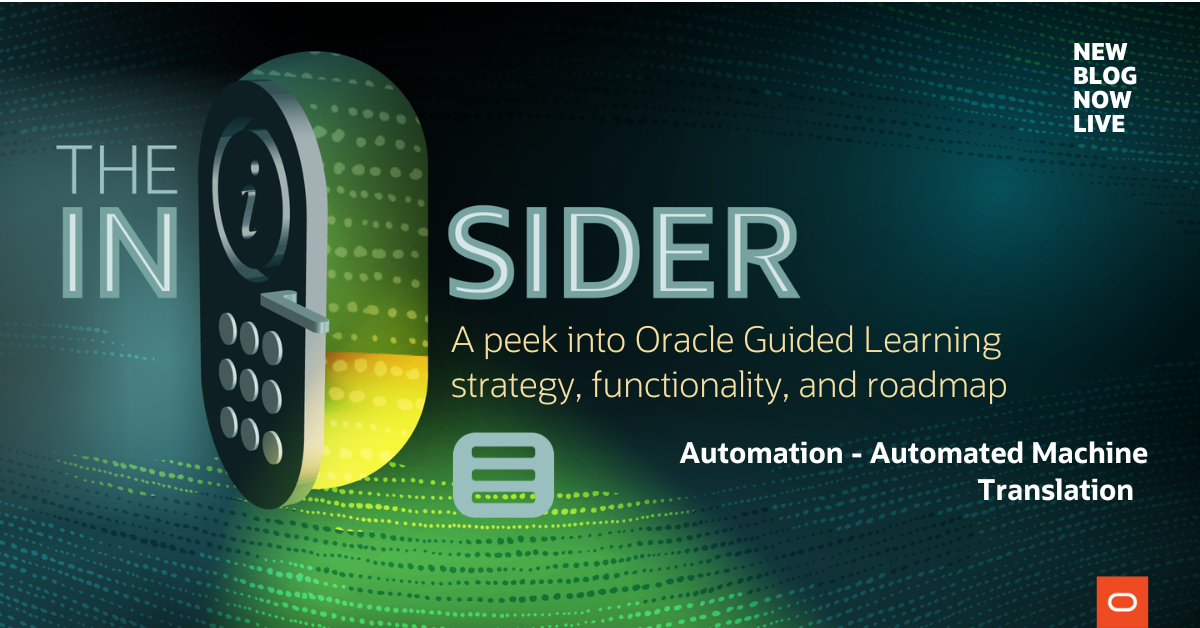
Welcome to another installation of “The Insider”, a peek into the inner workings of the Oracle Guided Learning Product team. Oracle Guided Learning is Oracle’s premier Digital Adoption Platform, designed to help organizations and their users adopt products, policies and processes faster as they transform continually in the cloud.
This series, will give you an insight into the rationales and reasonings for creating some of our premier features and give you visibility into the team behind the platform.
Automated Machine Translation – Translate content with Oracle’s AI swiftly.
With every change, learning how to close the communication barriers through language, will help you swiftly adopt more processes and policies quickly. We live in a multi-cultural world, with many of our employees possessing a language other than their ‘mother tongue’. Many customers also have multi- national locations with specific cultural practices and policies.
In the past, we would lean on our colleagues to translate content into their preferred language. This effort could involve a handover and days, weeks, months dedicated to translating training and message content. Often regional branches with specific language requirements were not catered for in the first few phases and left to embracing the change at a later stage of the project simply based on this resource risk.
A key component of a Digital Adoption Platform is to personalize and scale your training and change content with ease. Within Oracle Guided Learning (OGL), we employ Automated Machine Translation built on Oracle’s AI engine to translate content swiftly. This helps administrators to launch new projects, training and change initiatives to all regions on the same day, boosting inclusivity and accessibility.
What is it? Why did we incorporate this into our product?
Automated Machine Translation (MT) refers to the use of computer algorithms and software to translate text from one natural language into another, without the need for human intervention in the translation process. These systems analyze input text in the source language and generate output text in the target language.
At Oracle, we provide our own automated translation service called ‘OCI Language’. OCI Language now allows you to automatically translate text across 31 languages. This exciting feature uses state-of-the-art AI neural machine translation techniques to translate text at scale with high accuracy.
Oracle Guided Learning employs OCI Language as our core translation service. Translation of guides allows you to dynamically control which language of the guide will be displayed to the end user improving personalization and uptake. You can instantly translate your guides to the provided languages using the OCI translation service within the OGL console.
What is available today and how is this being applied?
We’re always expanding our language coverage. At the time of this blog post, the following languages are supported:
- Arabic (ar)
- Brazilian Portuguese (pt-BR)
- Canadian French (fr-CA)
- Croaian (hr)
- Czech (cs)
- Danish (da)
- Dutch (nl)
- English (en)
- Finnish (fi)
- French (fr)
- German (de)
- Greek (el)
- Hebrew (iw)
- Hungarian (hu)
- Italian (it)
- Japanese (ja)
- Korean (ko)
- Norwegian (no)
- Polish (pl)
- Portuguese (pt)
- Romanian (ro)
- Russian (ru)
- Simplified Chinese(zh-CN)
- Slovak (sk)
- Slovenian (sl)
- Spanish (es-ww)
- Swedish (sv)
- Thai (th)
- Traditional Chinese (zh-TW)
- Turkish (tr)
- Vietnamese (vi)
To translate content using Machine Translation:
- From the My Content page, select one or more guides that you wish to translate, then select Translate from the Bulk Actions dropdown menu.
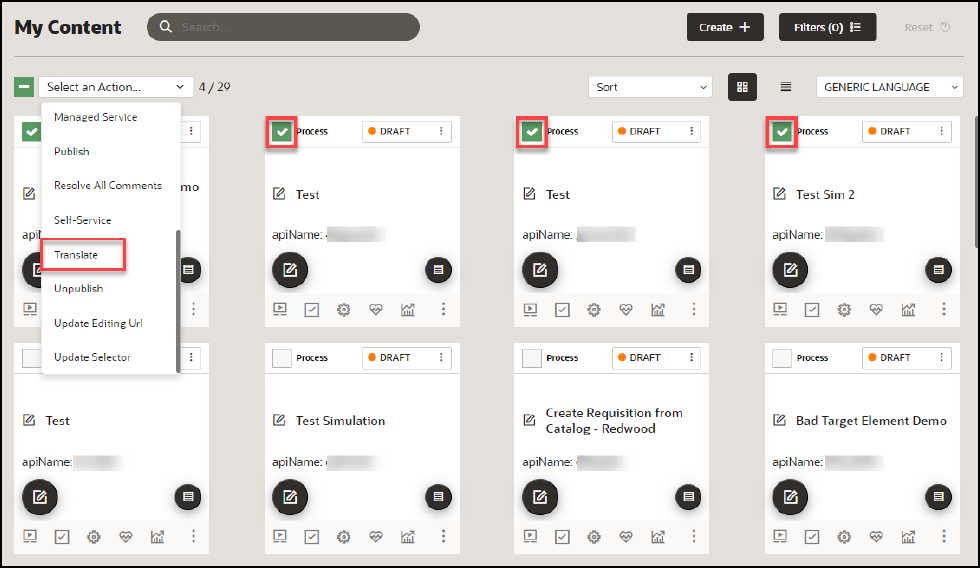
- The Translation modal opens.

- Select the “+” button next to the language(s) you wish to translate the guide from the list of available languages on the left. Any selected languages will appear in the Target Languages, then select Save and Exit when done.
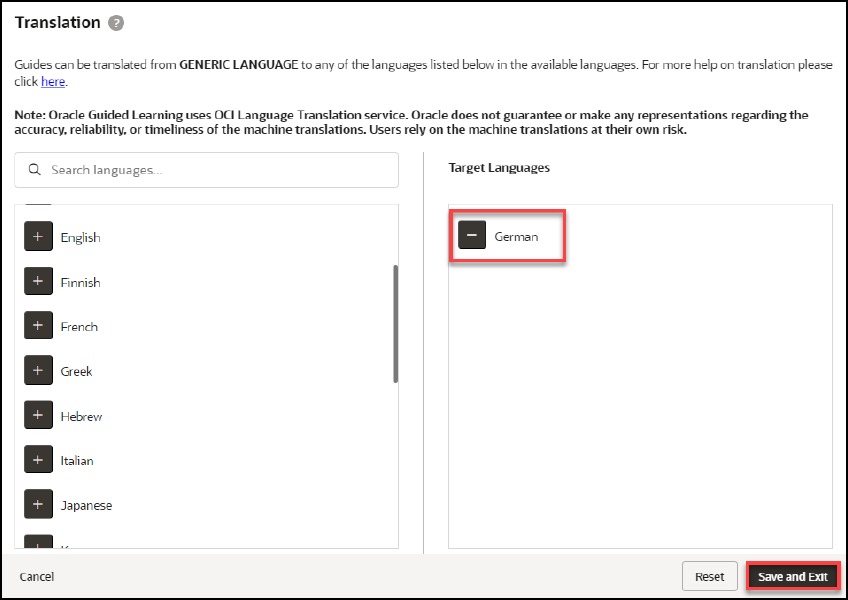
- Once the translation is complete, a confirmation message will appear at the top of the Translation modal indicating that the job has been scheduled and that an email will be sent to notify you when completed.

- Check your email inbox for a message from Oracle Guided Learning <noreply_ogl@comm-apps.ou.ocs.oraclecloud.com>. The message should look like this:
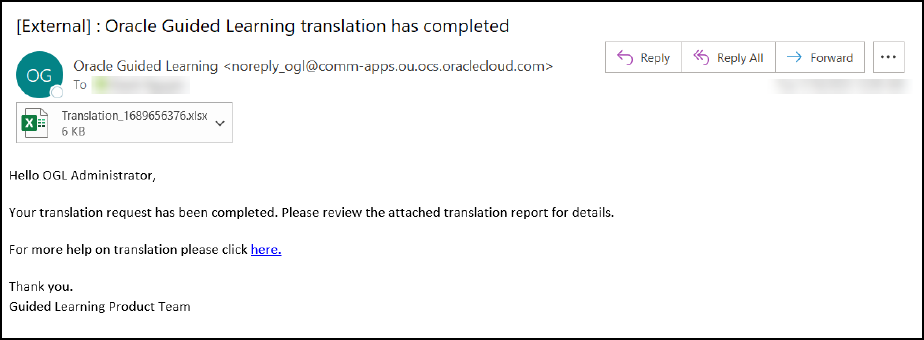
- Open the attached Excel spreadsheet to view the translation status of all selected guides.

- The translated guides will now appear in their respective language folders in the My Content page. To toggle between each language folder, select the language dropdown menu.
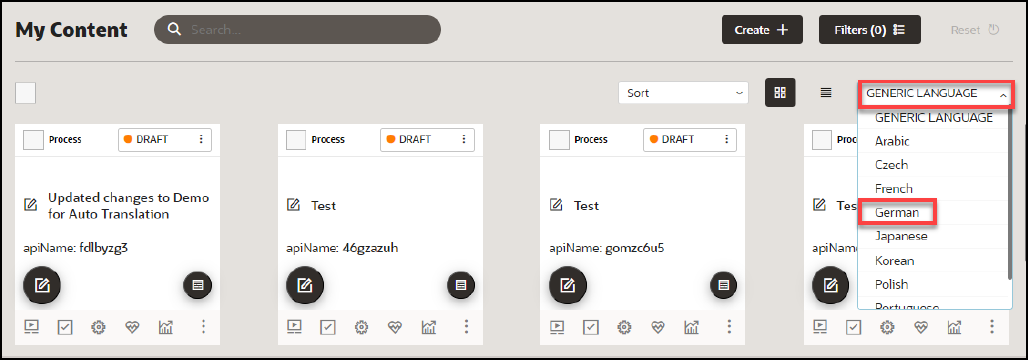
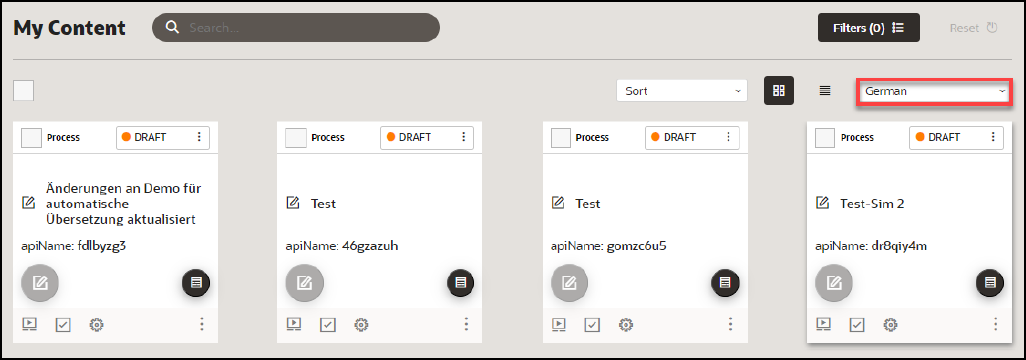
What have we noticed about the feature’s adoption and use case from our customers?
We have noticed positive uptake from our customers in leveraging this service. This has allowed administrators to optimize their time shifting from translating content from scratch, to reviewing, amending and approving output.
Additionally, Auto-translation can easily scale to handle large volumes of content because it is a computer-based process. This scalability makes it suitable for businesses with extensive translation needs, such as those that operate in multiple languages or have a large amount of content to translate.
Overall, the speed and scalability of auto-translation make it a valuable tool for businesses that need to translate content quickly and efficiently.
What’s next? Where are we going?
The following future enhancements are being evaluated to improve upon this feature’s capabilities and performance:
- Expansion of languages that are being covered.
- Translation of application properties and selectors (not simply guide contents)
- Evaluating the character limit of 5,000 characters per step

